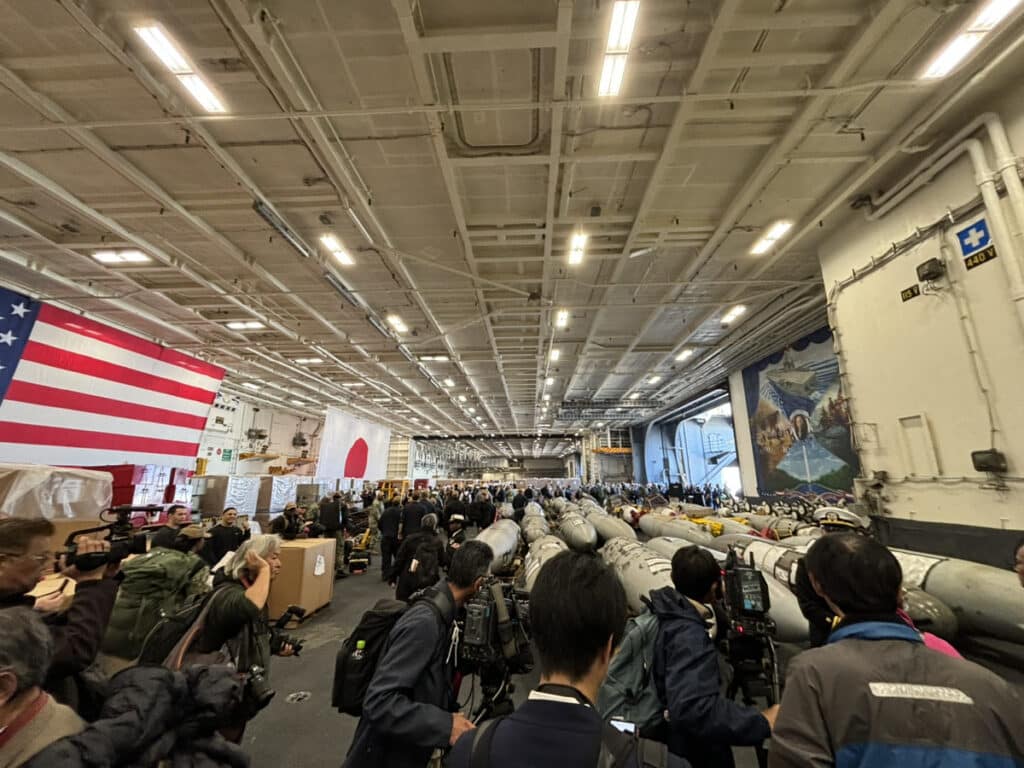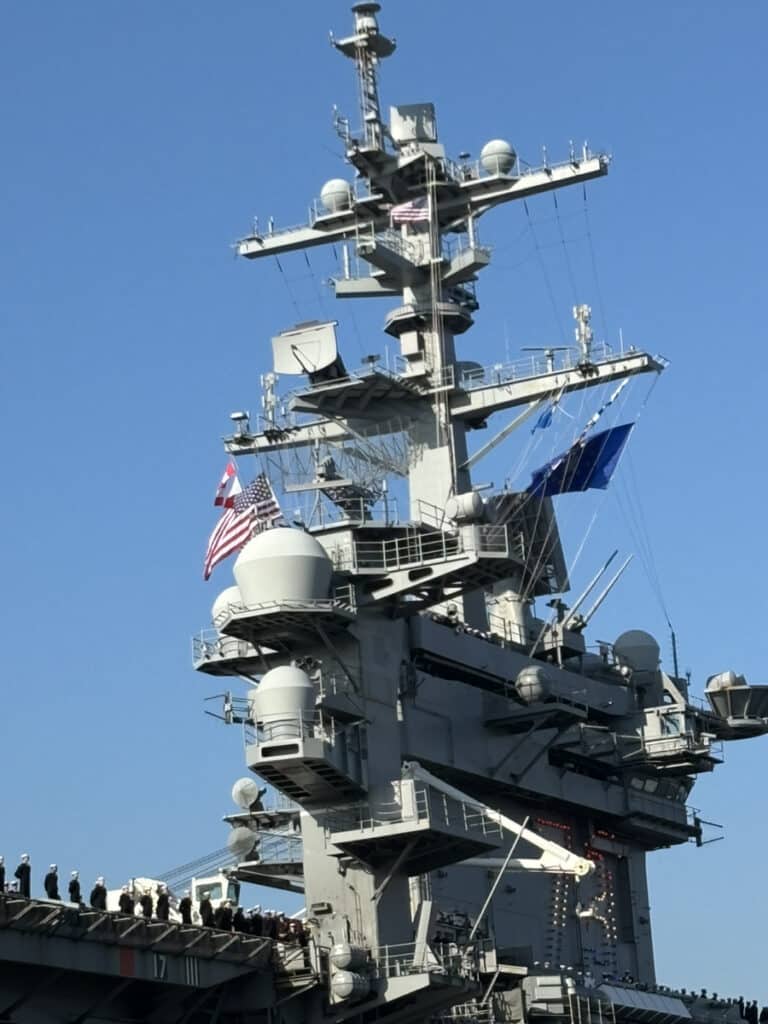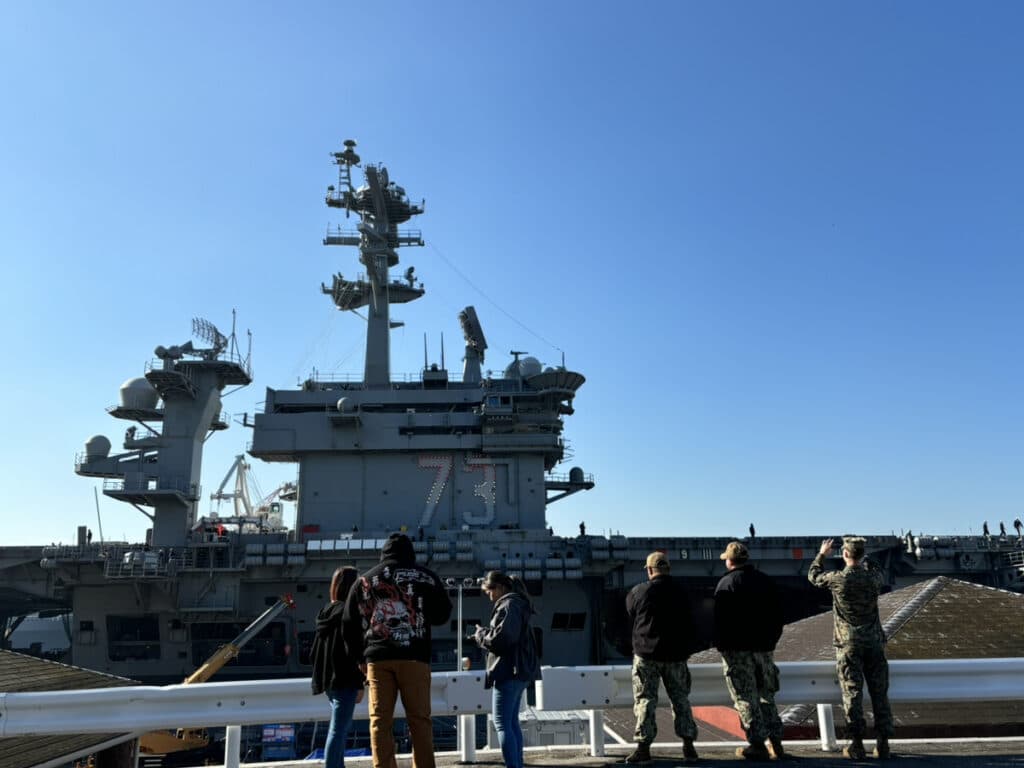George Washington is the sixth vessel of the Nimitz-class nuclear-powered aircraft carriers and was commissioned in 1992. It has an overall length of 333 meters, a beam of 76.8 meters, and a full-load displacement of approximately 104,000 tons. The carrier’s hangar and flight deck can accommodate a total of over 70 aircraft. Before arriving at Yokosuka, its fixed-wing aircraft were flown to Marine Corps Air Station (MCAS) Iwakuni, while its rotary-wing aircraft were transferred to Naval Air Facility Atsugi.
George Washington has arrived at Yokosuka to serve as a forward-deployed asset in the Indo-Pacific region. Moving forward, it will operate from Yokosuka as its homeport for an extended period. This is the second time the ship has been assigned to Yokosuka. The first deployment lasted from 2008 to 2015, marking the first deployment of a nuclear-powered aircraft carrier to Japan. Subsequently, George Washington underwent a Refueling and Complex Overhaul (RCOH) from 2017 to 2023.
“We are proud to bring George Washington back to Yokosuka and back to the location of the most meaningful time in the ship’s history,” said Rear Adm. Greg Newkirk, commander of Task Force 70 and the George Washington Carrier Strike Group. “Her crew is made up of both returning friends and many new to Japan, where they and their families will create lifelong memories and friendships in this magnificent Japanese city. Together, the combined community– back dropped by the JMSDF fleet and America’s only forward-deployed aircraft carrier –represents a shared vision of peace and prosperity across the region. We are truly allies, friends and family.”
During its RCOH, George Washington received significant upgrades to its onboard systems. Various electronic warfare systems, among other enhancements, were added to the vessel. Additionally, the carrier is now equipped with new-generation aircraft, including the state-of-the-art F-35C stealth fighter, the CMV-22B tiltrotor transport aircraft, and the E-2D Advanced Hawkeye which is now outfitted with refueling probes for air-to-air refueling operations.
“A US carrier represents the most advanced maritime capability we have, and it’s the most advanced investment we can make in the security of Japan and of the Western Pacific,” said Vice Adm. Fred Kacher, commander, U.S. 7th Fleet. “The George Washington returns with modernized, cutting-edge technology that represents our investment in deterrence and security in this region.”



This post was originally published on here







